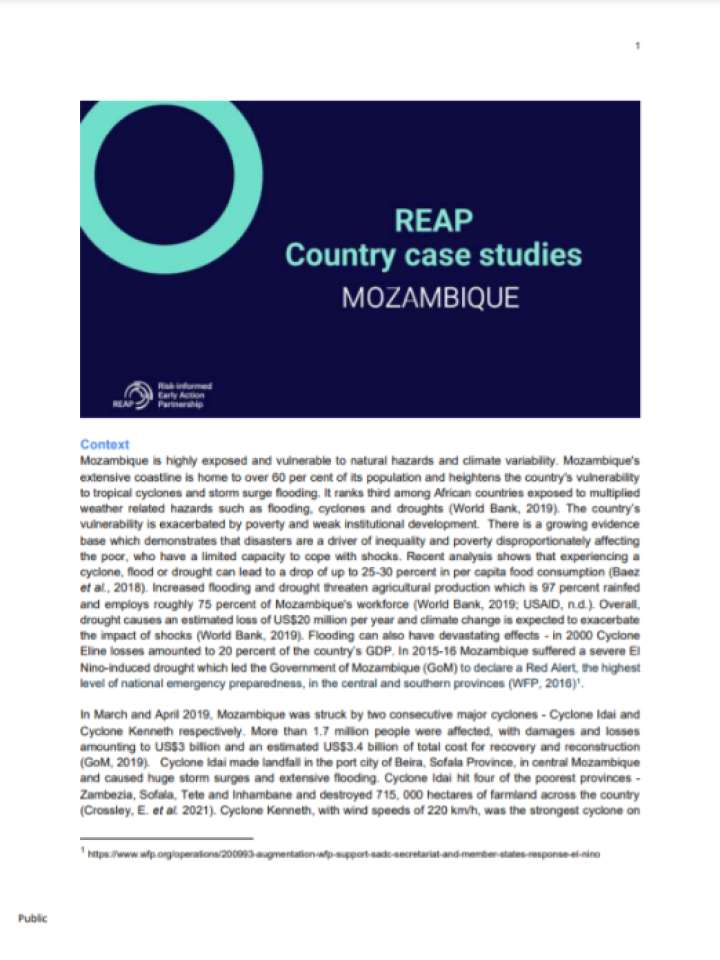REAP country case studies: Mozambique
This document outlines the risks faced by Mozambique and the relevant policies, initiatives, and institutions for managing risk and supporting anticipatory action (AA), social protection, and disaster risk financing. Mozambique is highly exposed and vulnerable to natural hazards and climate variability. Mozambique's extensive coastline is home to over 60 per cent of its population and heightens the country's vulnerability to tropical cyclones and storm surge flooding. The country’s vulnerability is exacerbated by poverty and weak institutional development. There is a growing evidence base which demonstrates that disasters are a driver of inequality and poverty disproportionately affecting the poor, who have a limited capacity to cope with shocks.
The analysis finds that the progress of AA in Mozambique has been slow, especially compared to other countries such as the Philippines and Bangladesh. This highlights the importance of the enabling environment and the importance of government buy-in. Although there are good DRR frameworks in place, the implementation of those frameworks is lacking. In addition to this, the divide between humanitarian and development actors and approaches is clear, as evident by the cyclone response. Although the need for a resilience approach is widely recognised, it is currently not sufficiently emphasised and is underfunded in Mozambique. The dynamics of compounding risk in Mozambique is complex and a challenge for Forecast-based financing programmes in Mozambique. Since AA is considered an ‘innovation’, it was suggested that advocacy needs to be run in parallel to more technical work around developing triggers, to get actors on board.
Explore further
